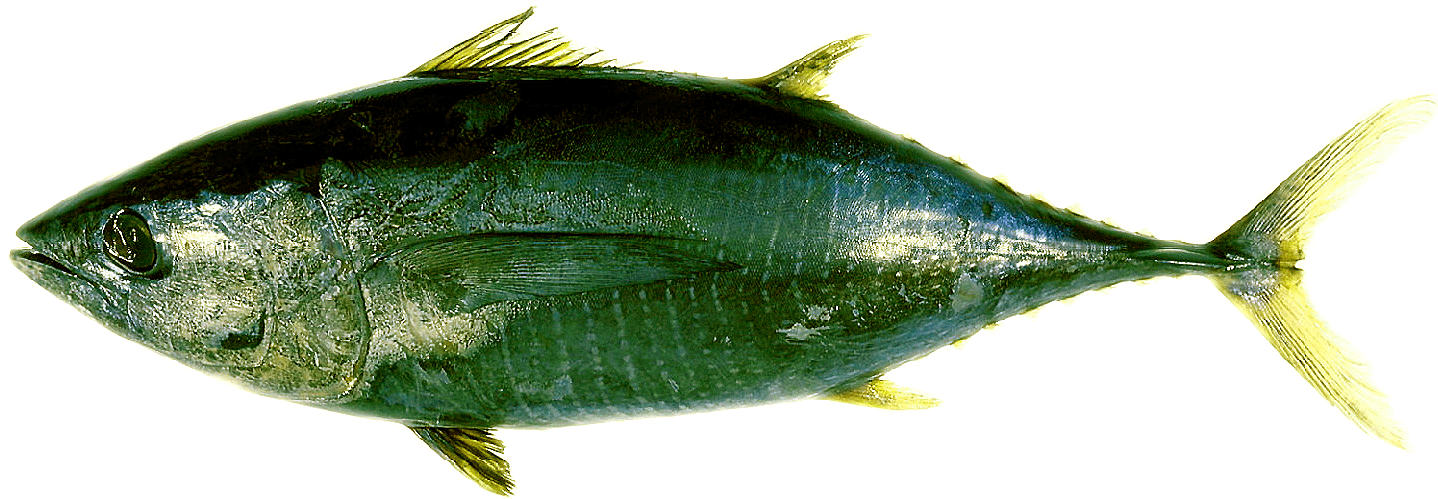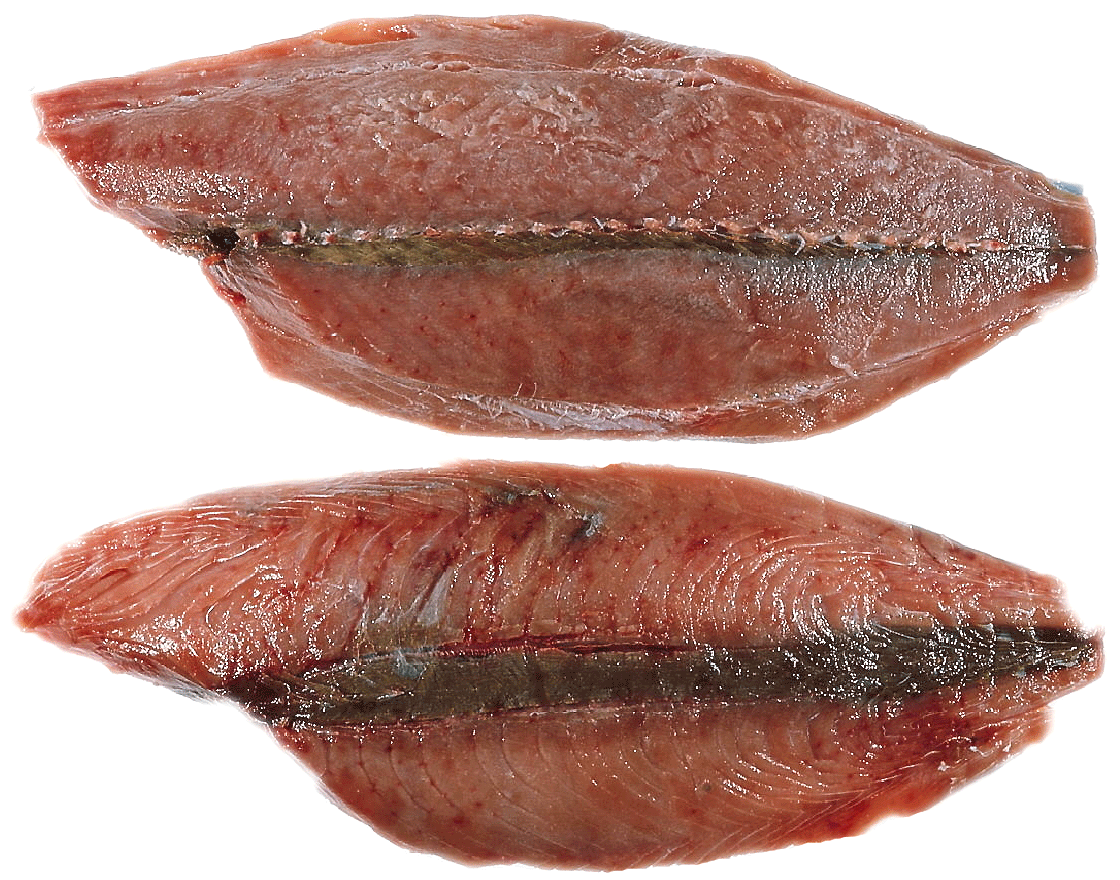|
|
|
||||||
 Tuna,
Yellowfin Thunnus albacares
Ahi (Hawaii), Rabil (Spain), Tonno Albacora
(Italy), Atun Amarillo (Mexico to Chile), Shibi (Japan) Tuna,
Yellowfin Thunnus albacares
Ahi (Hawaii), Rabil (Spain), Tonno Albacora
(Italy), Atun Amarillo (Mexico to Chile), Shibi (Japan)Yellowfin are the second most abundant tuna. The meat has long been used in the canning industry but has in recent years gained popularity as a fresh fish in restaurants. The yellow fin has a mild flavor, less rich than the bigeye and its red color turns to an ivory when cooked. Japan and Mexico are major produces of yellowfin with
some being caught off the Northeastern coast of the United States around
New England , but
The tuna meat should be a bright translucent red with a firm texture. If the tuna has struggled in the harvest it will appear brown and opaque, this is called "burned and this fish should be avoided. The value of Tuna is determined by meat color, fat/oil content, freshness, texture, and shape and size.
Temperature control at harvesting is important as Histamine poisoning called scombroid ids the result of an organic substance released from tissues when the tuna is not cooled down or iced properly. |
|||||||
|
|
|||||||

 most
are landed off the west coast of Mexico, the Gulf of Mexico and Hawaii.
most
are landed off the west coast of Mexico, the Gulf of Mexico and Hawaii.